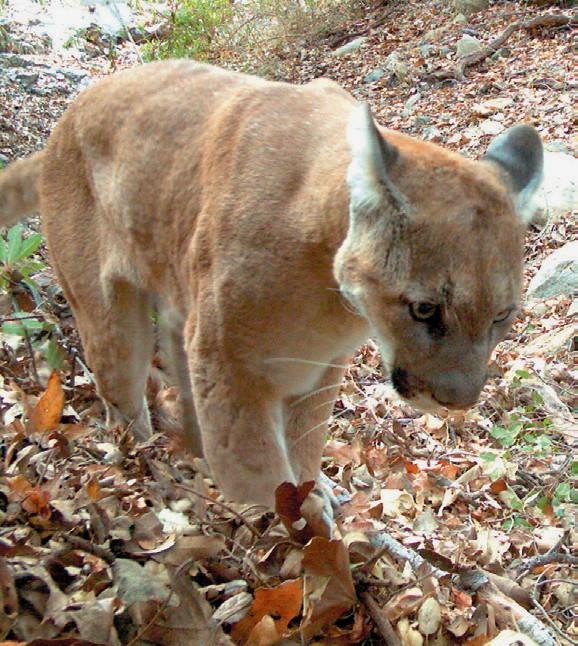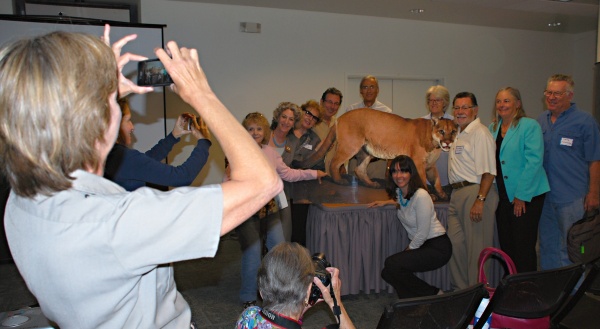Watch out SoCal…you may be hearing more about wildlife corridor in the coming weeks, months and maybe years ahead.
To raise awareness of the plight of land-locked critters, the National Wildlife Federation California has partnered with the Santa Monica Mountains Fund to advocate for such corridors, especially one that has been eyeballed at across the 101 Freeway at Liberty Canyon in Agoura Hills for years because of the green open spaces on either side of the freeway.
Caltrans has recently applied for a $2 million grant which would enable them to start the process with engineering reports and physical analysis which would produce a final blueprint for the corridor. Grants will be announced in mid-September.
Regardless of the outcome, the NWF and SMMF along with other members of the “Corridor Coalition” will be hosting a rally at Liberty Canyon on Sept. 19 to either celebrate or regroup their efforts. Stay tuned. This isn’t the last you’ll be reading about corridors… besides, if such a project was green-lit, it would take years to design and build.
But let’s back up….what exactly is a wildlife corridor and why do we need them? Here’s take-away points from a recent public discussion hosted by NWF and the SMMF that was attended by local politicos, national park service reps and other wildlife groups.
-
Critters have no place to go in SoCal.
Wildlife is very fragmented in the greater Los Angeles area and critters (especially big predators) are kept enclosed by freeways, highways and development. This is dramatically represented in the case of the estimated 40+ mountain lions that live in the Santa Monica Mountains. “New blood” can’t easily get into the area which leaves the current population with a dwindling gene pool of diversity.

-
Corridors are all about connection.
Biologists have longed to see some kind of underpass, overpass, tunnel, etc. that would unite the Santa Monica Mountains with the northern ranges of the Santa Susanna and the Simi Valley all the way north to the Los Padres National Forest. Movement between spaces means a healthy population.

-
Just the right amount of critters.
Would adding a corridor mean more mountain lions in the area? No, say National Park Service researcher Jeff Skikich who’s been studying mountain lions in the area for more than a decade. A full grown male mountain lion keeps about a 300 sq. mile territory and defends it from other males. Right now, we have enough males in the area – the problem is young adult males that have no space to claim as their own. Those young males usually end up dead after a fight with an alpha male.

-
From lizards to lions to tourists and school kids.
Studies have shown that even lizards and birds would benefit from easier connection between wild spaces. Mayor pro tem of Agoura Hills Illece Buckley Webber sees a tourist boom if such a corridor was built in her city. NWF president Beth Pratt sees educational components for students and teachers.

-
If you build it, they will come.
It’s a load of money to build these things – whether it’s an underpass (expensive) or overpass (more expensive). Corridors in Florida, Utah, Canada and elsewhere have proven successful. Locally, biologists point to where big cats (cougars and bobcats) have been hit by cars on the freeway as testimonials to their need. Barbara Marquez of Caltrans describes past Caltrans projects that studied how wildlife used certain tunnels, culverts, etc. to escape being road kill.
-
So corridors are good…why has it taken so long to get the ball rolling?
Let’s face it. Sometimes wildlife issues aren’t the sexiest causes for politicians and government officials. But NWF’s Pratt thinks that the case of P-22, Griffith Park’s famed mountain lion that was born in the Santa Monica Mountains, gave the public a good story and face that illustrated the plight. Hey, P-22 being in the National Geographic didn’t hurt either.

Featured image: View of the Liberty Canyon exit on the 101 near Agoura Hills. PHOTO: NPS
— Brenda Rees, editor
